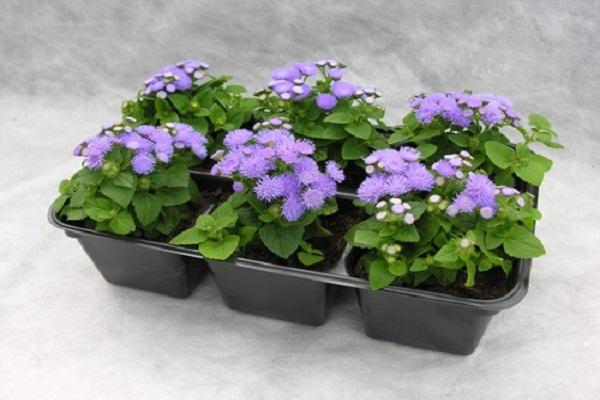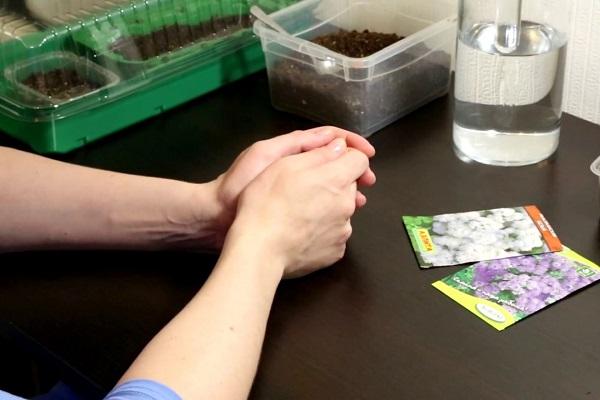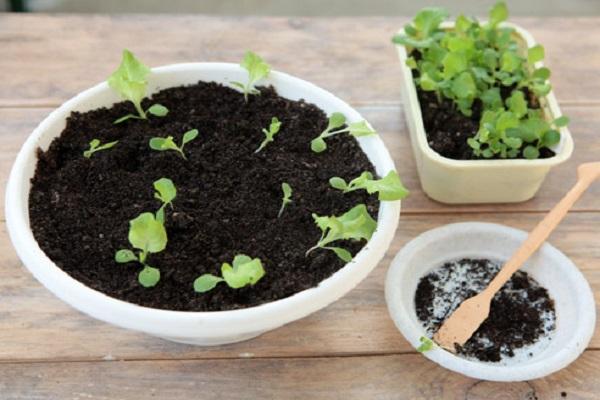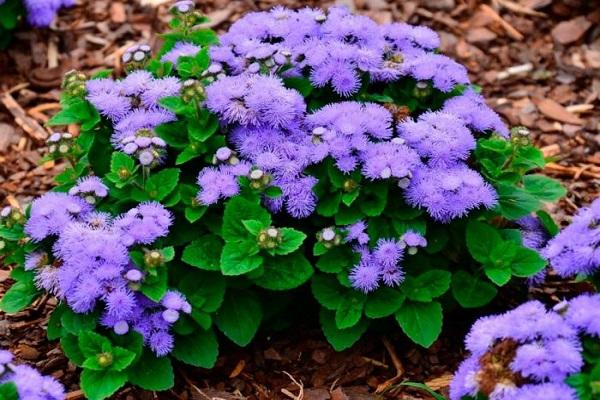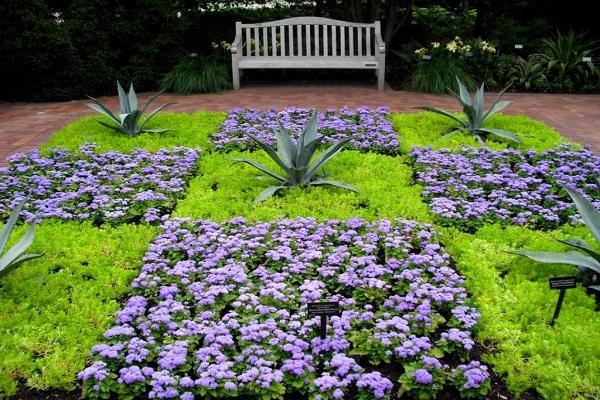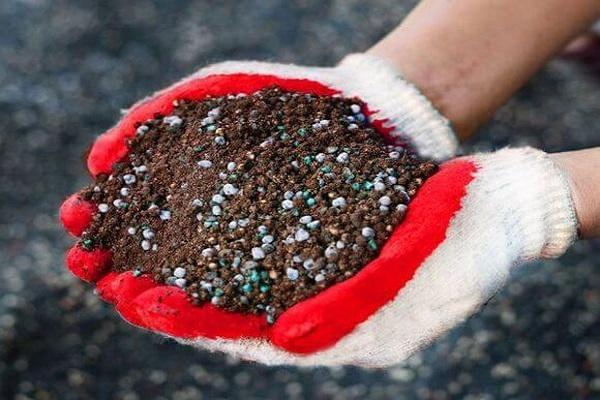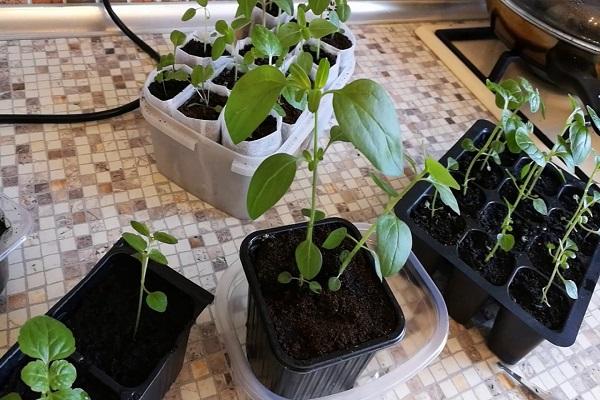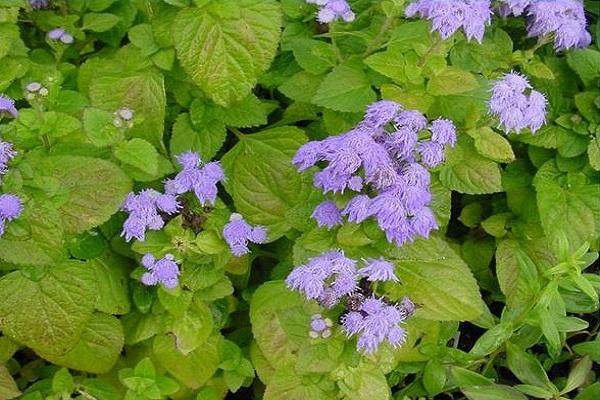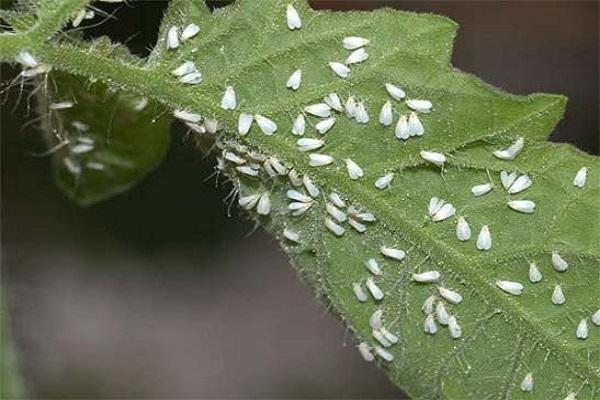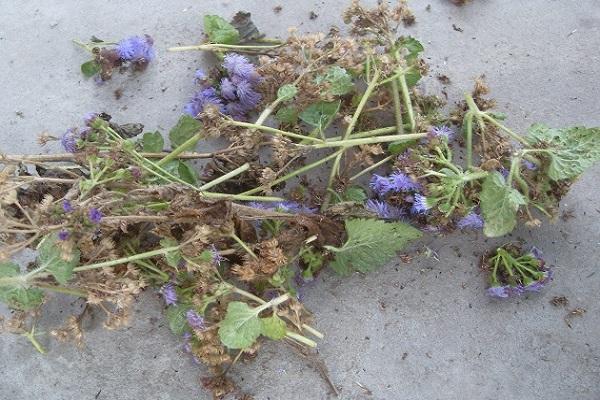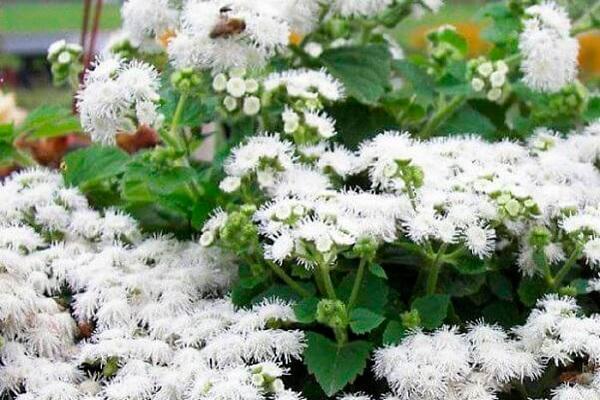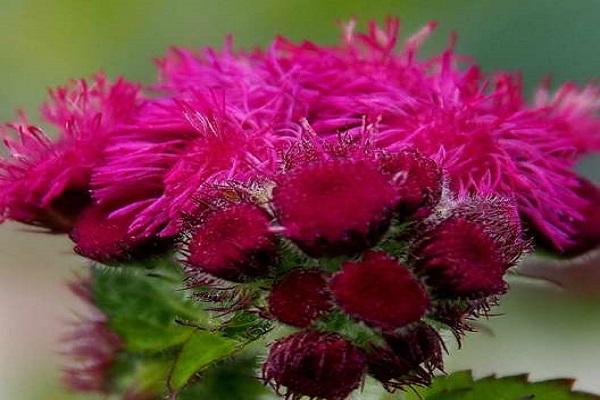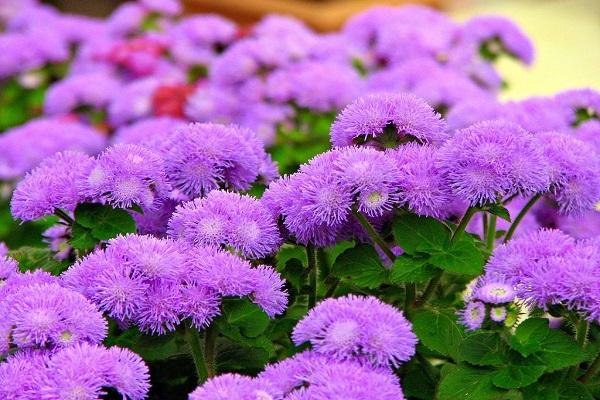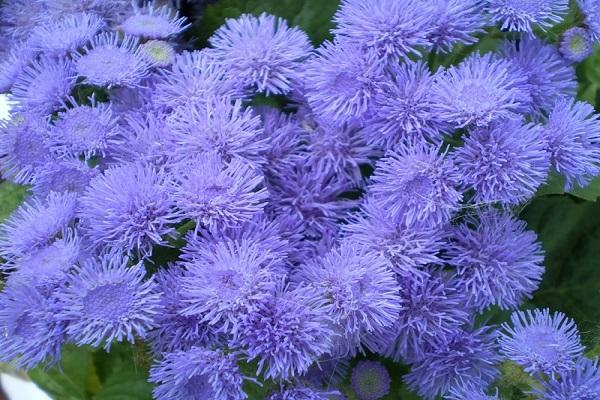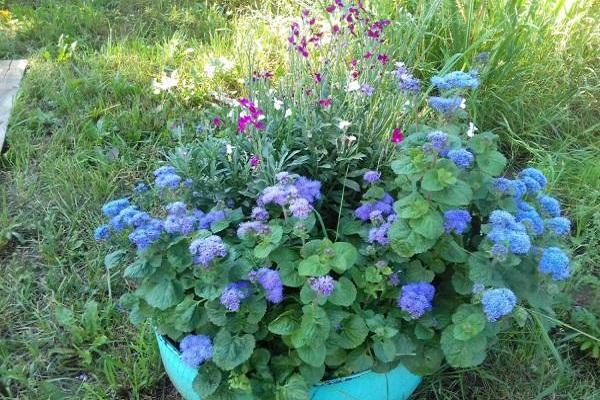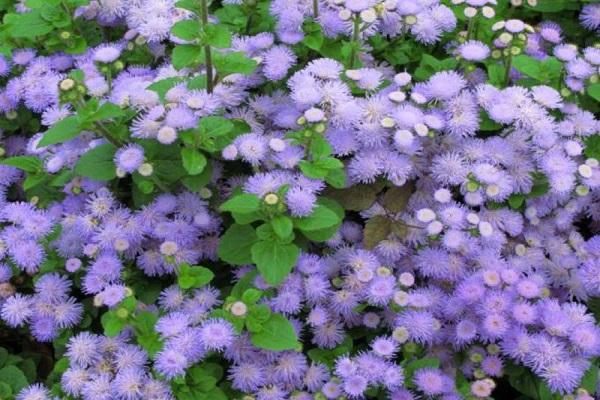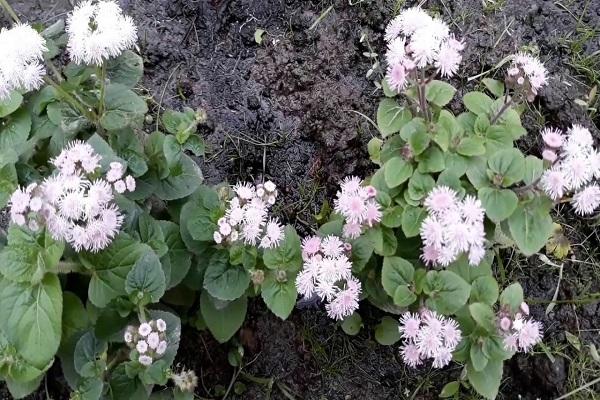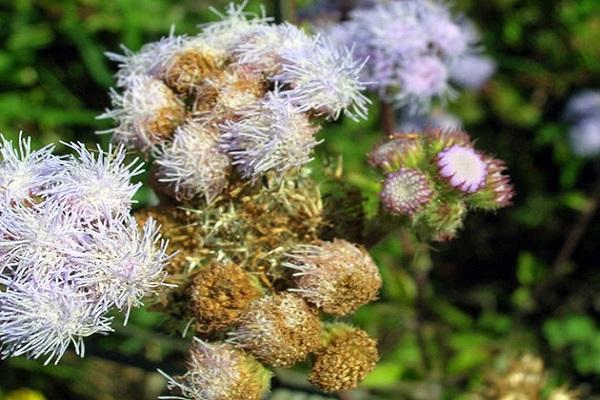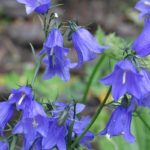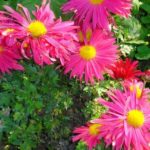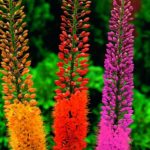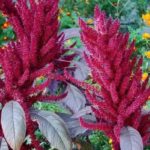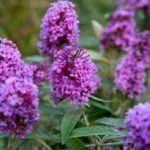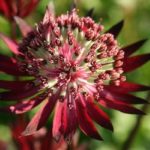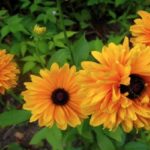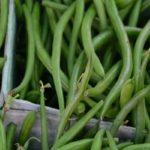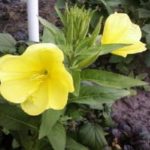Among the variety of flowers, it is sometimes difficult to decide which variety to buy for planting in the garden. You can pay attention to ageratum. This is an easy-to-care and long-blooming flower. Planting and caring for ageratum in open ground will be a pleasure.
- Description and features
- Growing seedlings
- Deadlines
- Soil preparation
- How to plant
- Picking
- Planting in open ground
- When to plant
- Soil requirements
- Planting scheme
- Care
- Watering
- Loosening and weeding
- Top dressing
- Trimming
- After flowering
- Topping
- Diseases and pests
- Rot
- Cucumber mosaic
- Bacterial wilt
- Whitefly
- Spider mite
- Nematodes and cutworms
- Reproduction
- Collection and storage of seeds
- Cuttings
- Kinds
- White
- Blue
- Houston
- Red
- Dwarf
- short
- Popular varieties
- Alba
- Azur Pearl
- Faye Pink
- Blue Mink
- Blue bouquet
- Bavaria
- Hawaii
- Blue mink
- White ball
- Pink fire
- North Sea
- Leda
- Cardinal Bordeaux
- Salvia
- Kalinka
- Alisum
- Possible difficulties
- Use in landscape design
Description and features
Ageratum is native to Central and North America. The flower is characterized by a long flowering period. The inflorescences bloom in early June and bloom until frost. Ageratum is a small spherical bush. Its height is up to 70 cm. The leaves are rich green, the inflorescences are blue or purple, and also come in pink and white. The inflorescences are small, with a rich aroma, collected in umbrellas.
Growing seedlings
Ageratum is an unpretentious crop that is easy to grow. Flowers are planted at home as seedlings, and in the spring they are transplanted into open ground.
Deadlines
Ageratum is planted mainly by seed. The timing of seed planting depends on the region of residence. In areas with early spring, seeds can be planted in late March. And in colder climates - at the end of February, beginning of March.
Soil preparation
For planting, you can use special soil for flower crops or prepare a soil mixture yourself. To do this you will need:
- soil from the site;
- peat;
- turf land;
- sand;
- drainage.
Drainage is poured into the bottom of the box. The soil is watered with potassium permanganate or calcined to disinfect it. Separately mix all the other ingredients so that a homogeneous mass is obtained and pour into the box. After this, you can start planting seeds.
How to plant
Planting seeds is quite simple. The process of planting ageratum seeds:
- Make small furrows in the soil and add seeds.It is better to plant planting material rarely, so that the seedlings do not interfere with each other’s growth.
- Lightly sprinkle the seeds with soil.
- Pour generously with warm water.
- Cover the box with cling film.
- The film is regularly removed to ventilate the soil and the seeds are watered.
In a few days, shoots should appear. As soon as this happens, the cling film is removed. You don’t have to cover the container, but using cling film you can create a greenhouse effect, and then the planting material will sprout faster.
Picking
Picking is not always necessary. Especially if the bushes have enough space in the container. But if the seedlings are planted too close to each other, then they are planted in separate pots. Picking is carried out after a pair of full leaves appear on the seedlings.
The seedlings are transplanted into peat pots filled with the same soil mixture as the boxes with seedlings. You can plant bushes in the ground together with these pots.
Planting in open ground
The second stage of growing ageratum is transplanting into open ground. Before planting, you need to decide in advance how the plants will be planted in the flowerbed.
When to plant
Ageratum seedlings are planted after the weather becomes warm outside. It's the beginning of May. If the spring turned out to be cold, then replanting can be postponed until it warms up and the soil warms up.
Soil requirements
Ageratum prefers to grow on loose, well-drained soils. It is best if the acidity is neutral. It is not recommended to plant seedlings in rocky soil with high humidity. Such conditions contribute to the development of diseases.
Planting scheme
Plants are planted at a distance of 20-25 cm from each other. The holes are dug 10 cm deep and 5 cm wide.
Care
Although ageratum is an unpretentious crop, it cannot be done without care.
Watering
It is recommended to water ageratum in the evening, after sunset. Or in the morning, while the sun's rays are not yet so active. You need to water every evening if it is hot. Or 2-3 times a week if it rains regularly. Heated water is used for irrigation.
Loosening and weeding
It is enough to weed beds with flowers once a week before watering. During weeding, all weeds are removed from the flowerbed. It is not recommended to loosen the soil deeply so as not to damage the root system.
Top dressing
In the first half of the season, nitrogen-containing fertilizers are added to the soil to stimulate the growth of seedlings. And when the ovaries begin to appear, the soil is watered with chicken droppings or manure diluted in water once every two weeks. It is not recommended to overfeed the plants, otherwise they will stop blooming.
Trimming
Dry, yellowed leaves and old inflorescences are cut off from the bush. Use sharp garden shears for pruning.
After flowering
After flowering, the inflorescences are cut off. Ageratum is a perennial plant, so before the onset of cold weather, the most beautiful and largest bushes are dug up and planted at home. And in the spring you can transplant the bushes outside again.
Topping
The plant does not require pinching.
Diseases and pests
It is important to take action at the first sign of disease or pests.
Rot
Most often, when propagating a crop, you have to deal with rot. The disease develops at high humidity. The first sign is the appearance of black spots on parts of the plants. You can get rid of rot by spraying with Fundazol or Topaz. If these measures do not help, the bushes are dug up and thrown away, and the soil is disinfected.
Cucumber mosaic
Cucumber mosaic is spread by insects. The first sign of cucumber rot is yellow spots. There is no cure for the disease. You can only prevent its appearance. Weeds are regularly removed from the site and the soil is weeded. You also need to immediately fight insects as soon as they appear in the flowerbed.
Bacterial wilt
In the southern regions, bacterial wilt is often encountered. The tissues of the infected bush begin to crack, active evaporation of moisture occurs, and turgor decreases. Yellow spots with a brown border appear on the leaves.
A plant can be cured of bacterial wilt only at an early stage of its appearance. The bushes are treated with Coronet. To prevent the onset of the disease, prevention is important. Weeds need to be promptly removed and plants fed.
Whitefly
It is easy to detect the presence of whiteflies. If you touch the bushes, white midges begin to fly away. Insects feed on plant sap, causing the bushes to die. You can destroy whiteflies using the preparations “Aktellik”, “Aktara” or “Admiral”.
Spider mite
A sign of spider mites is yellow dots. If there are a lot of pests, then you can see a white cobweb on the bushes. Pests are very tenacious and quickly adapt to chemicals, so they need to be alternated. The drugs Fufanon, Fitoverm and Actellik are suitable for the fight.
Nematodes and cutworms
The nematode attacks the root system. You can destroy it with the drugs “Tiaz” and “Rogor”. Treatment of bushes with insecticides helps against cutworms.
Reproduction
There are two ways to propagate a plant - seed and cuttings. Most often, when growing ageratum, the seed method is used.
Collection and storage of seeds
After trimming the inflorescence, you can collect the seeds.The inflorescences are dried and then the seeds are collected. They can be stored for 3-4 years, so it is not necessary to collect planting material every year. Store seeds in the refrigerator.
Cuttings
By autumn, the bushes are dug up and transplanted into pots. In the spring, the side branches of the plant are cut off right to the root. The length of the cuttings must be at least 5 cm. The cuttings are planted in the ground and covered with a plastic bag to create a greenhouse effect. When the cuttings take root, the bag is removed.
Kinds
There are a large number of varieties of ageratum. The main difference between all types is the color of the inflorescences. Although the most common are purple or blue shades of flowers.
White
A low-growing variety, the height of the bushes is about 15-20 cm. The diameter of an adult bush is 25 cm. The inflorescences are snow-white, collected in panicles with small flowers. Refers to annuals. Prefers to grow in open sunny areas.
Blue
The bushes are of the low-growing type, growing up to 20 cm in height. The inflorescences are blue, 1-2 cm in diameter. Flowering is long and abundant. The bush begins to bloom in June and ends with the onset of frost.
Houston
Ageratum Houston, or as it is also called, Mexican, in its natural environment is a perennial, but in our latitudes it is most often grown as an annual. The height of the bush can vary from 15 to 50 cm. The inflorescences come in different shades, but are always monochromatic. Based on this variety, a large number of varieties of different shades have been bred.
Red
An unusual variety with a non-standard shade for ageratum - red. The inflorescences of these varieties range from pale pink to rich burgundy. The height of the bushes can be different and depends on the variety.The inflorescences are collected in spherical panicles.
Dwarf
There are dwarf varieties of plants, the height of which does not exceed 15 cm. Such varieties can be of various shades. Suitable for growing in pots due to the small size of the bush.
short
Low-growing varieties grow from 15 to 25 cm in height. The shades of inflorescences can also be varied. Flowering is long-lasting, the bushes begin to bloom in July and end in October after the onset of frost.
Popular varieties
Breeders have developed a large number of varieties of ageratum, which differ in the shade of the inflorescences.
Alba
The inflorescences of this variety are white, the bush is compact, up to 20 cm high. The foliage is rich green.
Azur Pearl
The inflorescences of this variety are large and have a rich blue hue.
Faye Pink
Compact bush up to 30 cm high. Leaves are small. The inflorescences are dark pink, one flower is 4-6 mm in diameter.
Blue Mink
The Blue Mink variety is distinguished by fluffy blue inflorescences. The bush is compact, up to 25 cm high. The flowering period is from July to October.
Blue bouquet
A tall variety, the bush grows up to 45 cm in height. The inflorescences are blue-blue.
Bavaria
The bushes grow up to 25 cm. The inflorescences can be from snow-white to deep blue.
Hawaii
The inflorescences of this variety are white or purple. The variety is classified as dwarf and grows up to 20 cm in height.
Blue mink
The height of the bush is from 30 to 70 cm. The inflorescences are up to 3 cm in diameter, blue in color with a rich aroma.
White ball
Inflorescences of the White Ball variety are snow-white, spherical in shape. Bushes 25-30 cm high.
Pink fire
The bushes are compact, the flowers are deep pink.
North Sea
A low-growing variety, the height of the bushes is 15-20 cm. The inflorescences are sky blue.
Leda
The Leda variety is distinguished by its two-tone inflorescence color.
Cardinal Bordeaux
Inflorescences of a rich red hue, bushes up to 35 cm high.
Salvia
Scarlet flowers with a rich aroma. The bushes are low-growing, up to 35 cm high.
Kalinka
Inflorescences are red. Bushes up to 40 cm high.
Alisum
Inflorescences are yellow. The bush is low-growing, growing up to 15 cm in height.
Possible difficulties
When growing any flower crops, even the most unpretentious ones, problems can arise.
Mistakes when growing ageratum:
- Apply a large amount of nitrogen-containing fertilizers to the soil (excess nitrogen leads to the fact that the bush does not bloom, but increases its foliage mass). In addition, the plant’s immunity to diseases decreases.
- Ignore pruning (regular pruning of faded inflorescences promotes the appearance of side stems, making the bush more lush).
- Improper watering (excess and lack of moisture negatively affects the growth of bushes).
With proper care, ageratum can be grown for more than one year.
Use in landscape design
Ageratum is distinguished by its universal use in landscape design. The plant goes well with almost all flowers, including tall plants and shrubs. Ageratum is also used to decorate city flower beds.

